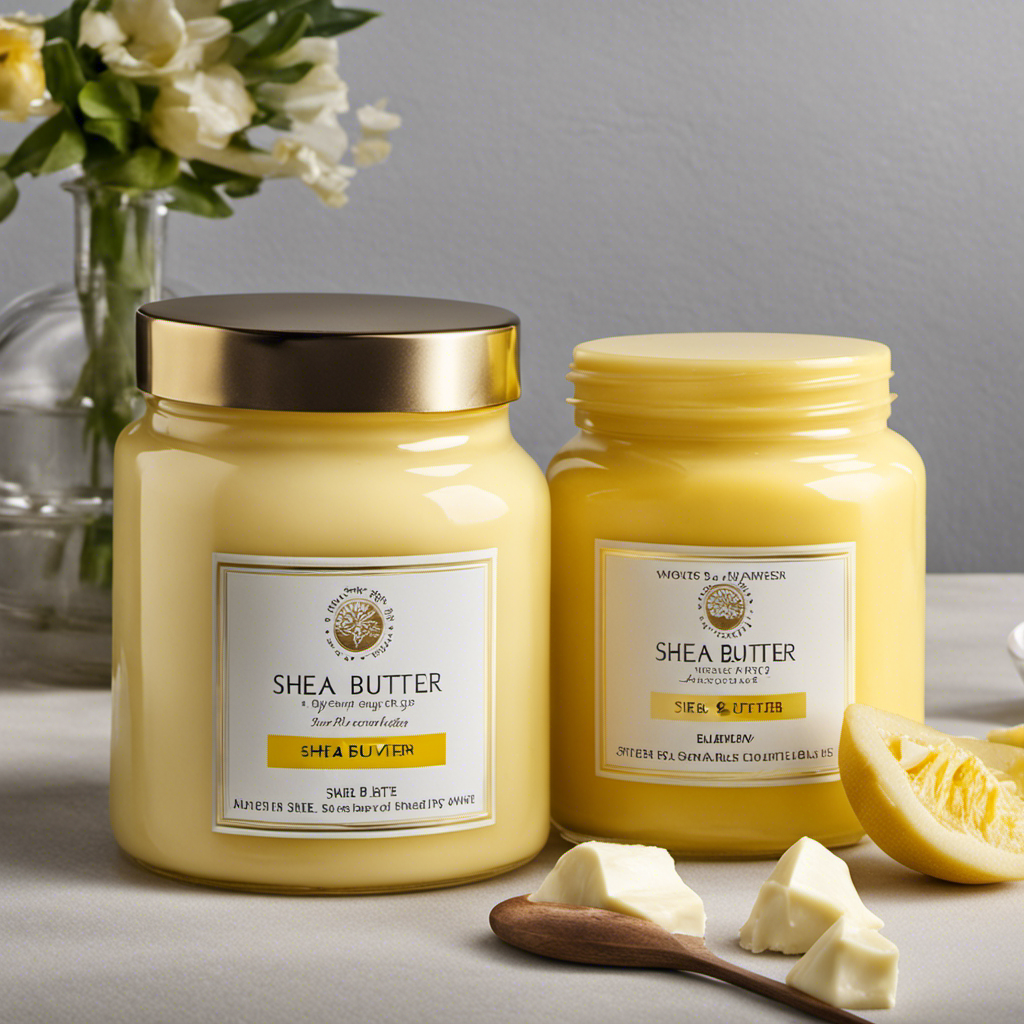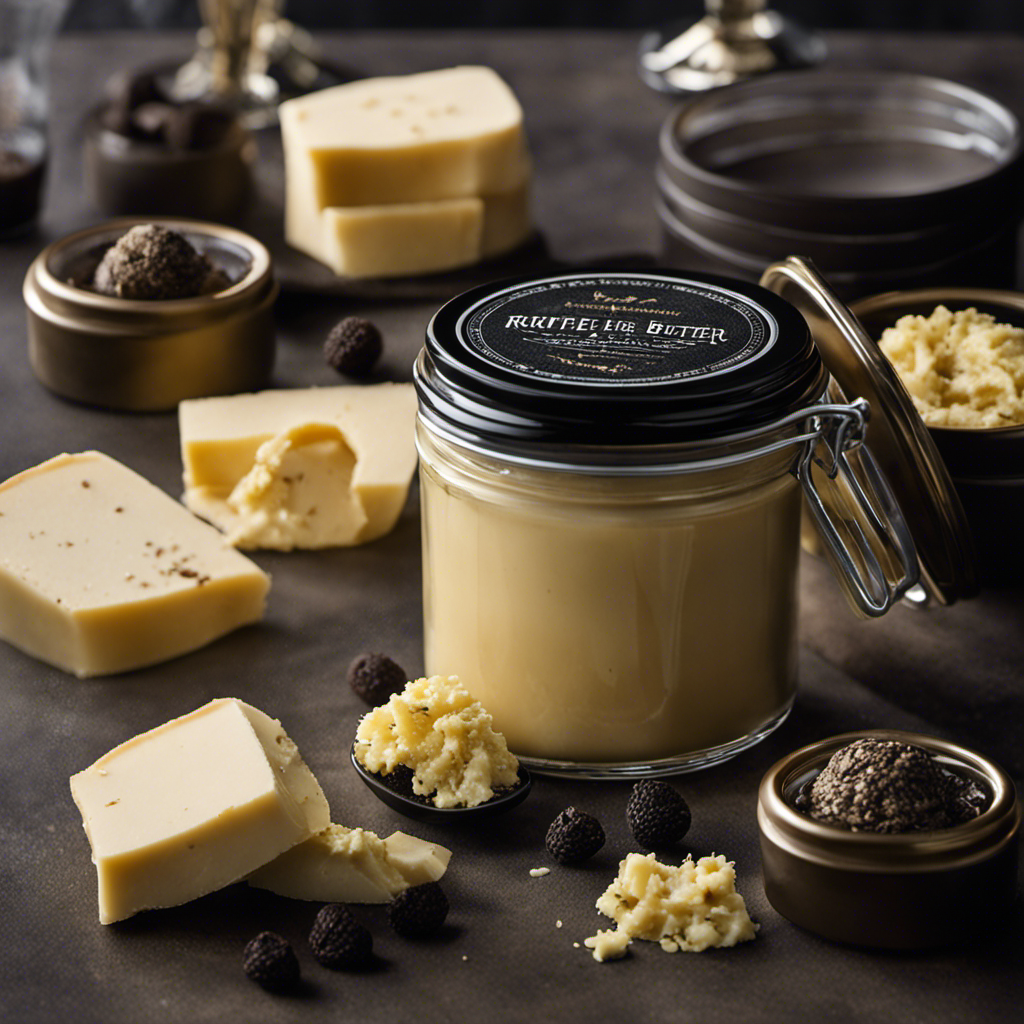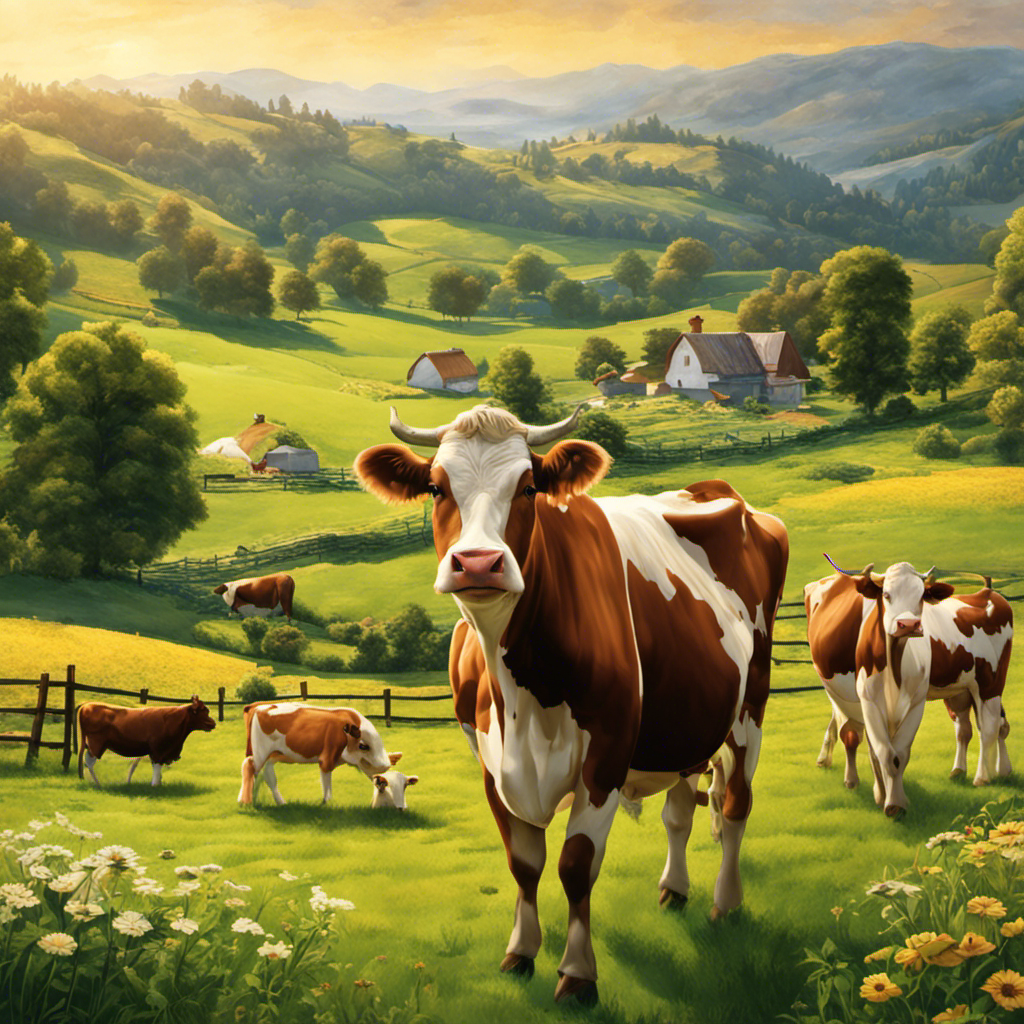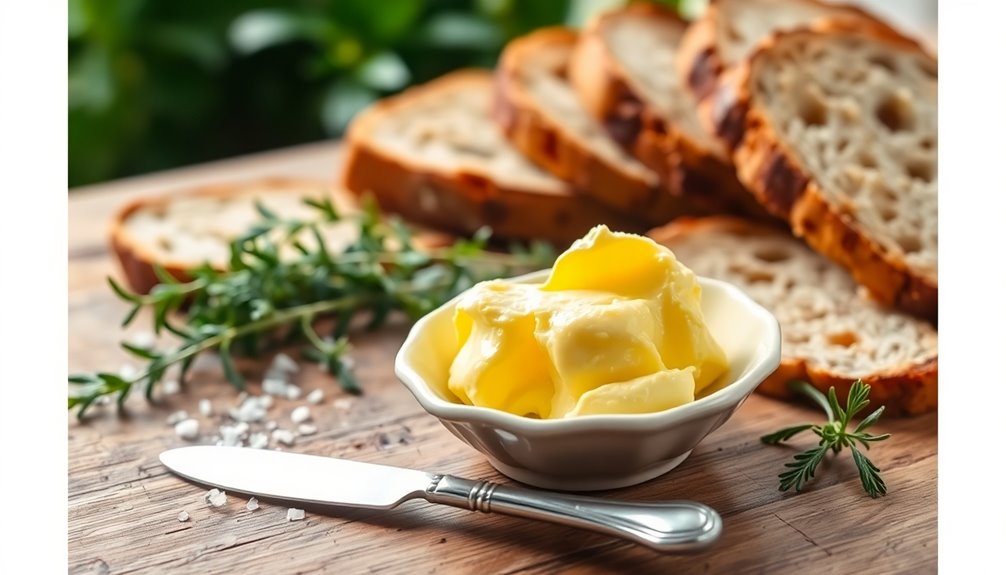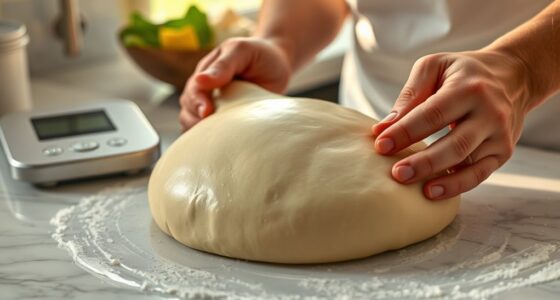I have always been interested in the distinctions between yellow and white shea butter. Did you know that yellow shea butter is commonly used in West Africa, while white shea butter is preferred in other parts of the world? It’s fascinating to see how the color differences can be attributed to extraction methods and sources.
In this article, we’ll explore the distinctions between yellow and white shea butter, including their nutritional composition, scent, texture, and popular uses. So, let’s dive in and uncover the secrets behind these two amazing skincare products.
Key Takeaways
- Yellow shea butter is commonly used in West Africa, while white shea butter is popular in other parts of the world.
- Yellow shea butter has a golden hue from fruit pulp, while white shea butter is refined and processed to remove fruit pulp.
- Both types of shea butter have moisturizing properties and contain vitamins A and E.
- The color of shea butter can vary due to factors such as shea nut type, soil conditions, and climate, but the effectiveness of shea butter is not solely determined by its color.
Shea Butter Extraction Process
To extract shea butter, you start by collecting the nuts from the shea tree and then roast them before grinding them into a paste. This process is crucial because it helps to release the oils from the nuts, which are responsible for the numerous benefits of shea butter.
Shea butter is known for its moisturizing properties and its ability to nourish and protect the skin. It contains vitamins A and E, which help to improve the elasticity of the skin and reduce the appearance of wrinkles. Shea butter also has anti-inflammatory and healing properties, making it an effective treatment for conditions such as eczema and psoriasis.
Additionally, it can be used to soothe dry and chapped lips, as well as to moisturize and soften the hair.
Color Differences
The color of yellow shea butter is noticeably different from white shea butter. Yellow shea butter gets its color from the natural presence of the karite tree’s fruit pulp, giving it a rich golden hue. On the other hand, white shea butter is refined and processed to remove the fruit pulp, resulting in a creamy white color.
Both types of shea butter have their own unique benefits for the skin. Shea butter is known for its moisturizing properties and is often used to soothe dry and irritated skin. It also contains vitamins A and E, which can help improve the skin’s elasticity and reduce the appearance of fine lines and wrinkles.
Whether you choose yellow or white shea butter, both can be a great addition to your skincare routine.
Source of Yellow Shea Butter
Natural color variations in shea butter can occur due to a variety of factors. These include the type of shea nut used, the soil conditions, and the climate in which the shea tree grows. These variations can result in shea butter ranging in color from a creamy white to a vibrant yellow.
The processing of shea butter also plays a role in its color. Certain methods may remove or alter the natural pigments present in the butter.
Natural Color Variations
You might notice that yellow and white shea butter have different natural color variations. These variations occur due to differences in the processing methods and the presence of certain natural compounds. Here are four things to know about the natural color variations in shea butter:
-
Yellow shea butter is often considered to be more beneficial for the skin due to its higher concentration of vitamins and antioxidants. It is rich in vitamins A and E, which help nourish and moisturize the skin.
-
White shea butter, on the other hand, undergoes further processing to remove impurities and has a milder scent compared to yellow shea butter. It is still effective for moisturizing the skin, but may not provide the same level of nourishment as its yellow counterpart.
-
The color of shea butter can also vary depending on the region where it is sourced. Shea butter from West Africa, where the shea tree is native, tends to have a more vibrant yellow color.
-
It’s important to note that the effectiveness of shea butter is not solely determined by its color. Both yellow and white shea butter can provide numerous benefits for the skin, including hydration, reduction of inflammation, and improvement of skin elasticity. The choice between the two ultimately depends on personal preference and the specific needs of your skin.
Shea Butter Processing
When processing shea butter, it’s important to consider the methods used and the presence of certain compounds. Shea butter is derived from the nuts of the shea tree and has been used for centuries due to its numerous benefits. It is rich in vitamins A, E, and F, making it a great ingredient for skincare.
The processing of shea butter involves extracting the nuts from their shells, roasting them, grinding them into a paste, and then separating the oil from the paste. This process can be done using traditional methods or modern machinery, each with its own impact on the final product.
The presence of certain compounds, such as stearic acid and oleic acid, can vary depending on the processing method used. These compounds contribute to the different properties and textures of shea butter, making it suitable for various skincare applications.
Understanding the processing methods and compounds present in shea butter is essential for harnessing its benefits in skincare.
As we delve deeper into the topic of shea butter, it is important to explore the source of white shea butter and how it differs from its yellow counterpart.
Source of White Shea Butter
In this discussion, I’ll be focusing on the difference between natural and processed shea butter, as well as the various extraction methods used to obtain this valuable product.
Natural shea butter is derived from the nuts of the shea tree, while processed shea butter undergoes additional refinement processes. These two types of shea butter offer different benefits and properties, which I’ll delve into further.
Additionally, I’ll explore the different extraction methods, such as cold-pressed and solvent extraction, and how they impact the quality and effectiveness of shea butter.
Natural Vs. Processed Shea
If you’re looking for a more natural option, white shea butter is processed to remove impurities while yellow shea butter is left in its raw state.
Here are some key differences between the two:
-
Nutrient Content: Yellow shea butter retains more of its natural vitamins and minerals due to minimal processing, making it a more nutrient-rich option for skincare.
-
Scent: White shea butter undergoes a deodorizing process to remove the natural nutty scent, resulting in a more neutral fragrance compared to the distinct aroma of yellow shea butter.
-
Consistency: Yellow shea butter has a thicker and denser consistency, making it ideal for intensive moisturization and dry skin conditions.
-
Color: As the name suggests, yellow shea butter has a natural golden yellow hue, while white shea butter appears ivory or off-white in color.
Both yellow and white shea butter offer numerous benefits for the skin, such as deep hydration, anti-inflammatory properties, and promoting collagen production.
Choose the one that suits your preferences and skincare needs.
Shea Butter Extraction Methods
To extract shea butter, you need to start by collecting the nuts from the shea tree. These nuts are then cracked open, revealing the shea kernels inside. The kernels are then roasted, ground, and kneaded to form a paste. This paste is then boiled, which separates the oil from the rest of the paste. The oil is then left to cool and solidify, resulting in the creamy shea butter that we know and love.
Shea butter has numerous benefits, both for the skin and hair. It is deeply moisturizing, nourishing, and helps to improve the overall texture and appearance of the skin. It also contains vitamins A, E, and F, which help to promote healthy skin cell growth and repair.
In the cosmetic industry, shea butter is widely used in skincare products such as lotions, creams, and balms, as well as in hair care products like shampoos and conditioners.
Overall, the extraction of shea butter is a meticulous process that yields a valuable and versatile ingredient. Its benefits and uses in the cosmetic industry make it a highly sought-after and cherished natural product.
Nutritional Composition
The nutritional composition of yellow and white shea butter differs slightly. Here are some key points to understand the differences:
-
Yellow shea butter: It gets its color from the pulp of the shea fruit, which is rich in carotenoids. These pigments provide additional antioxidant properties and promote skin health.
-
White shea butter: It undergoes further processing to remove the natural color. This results in a milder scent and a creamier texture, making it ideal for cosmetic applications.
-
Nutritional benefits: Both types of shea butter are packed with vitamins A, E, and F, essential fatty acids, and antioxidants. These nutrients nourish and moisturize the skin, promote collagen production, and protect against environmental damage.
-
Cosmetic applications: Yellow shea butter is often preferred for its natural color and stronger scent, making it suitable for use in soaps, lotions, and hair care products. White shea butter, on the other hand, is commonly used in skincare products for its neutral color and creamy texture.
Understanding the nutritional composition of yellow and white shea butter can help you choose the right option for your specific needs and preferences.
Scent and Fragrance
Understanding the nutritional composition can help me determine the scent and fragrance of yellow and white shea butter.
The difference in scent variations between the two types of shea butter is primarily due to their processing methods and the natural compounds present in each.
Yellow shea butter, also known as raw shea butter, is derived from the nut of the shea tree and has a distinct nutty scent. This is because it is minimally processed, allowing the natural fragrance of the shea nut to be retained.
On the other hand, white shea butter is often refined and deodorized, resulting in a milder and less noticeable fragrance.
Some people may have fragrance preferences, with some preferring the rich and nutty scent of yellow shea butter, while others may prefer the more subtle fragrance of white shea butter.
Ultimately, it comes down to personal preference and the desired scent experience when choosing between the two.
Texture and Consistency
The texture and consistency of yellow and white shea butter can vary due to their processing methods and natural compounds. Here are some key differences to note:
-
Graininess: Yellow shea butter often has a slightly grainy texture, which is a result of the traditional extraction method used. On the other hand, white shea butter is typically smoother in texture due to the additional refining process it undergoes.
-
Melting point: Yellow shea butter has a higher melting point compared to white shea butter. This means that yellow shea butter stays solid at room temperature for longer periods, while white shea butter melts more easily upon contact with the skin.
-
Processing methods: Yellow shea butter is typically extracted using traditional methods, which involve sun drying and manual extraction techniques. White shea butter undergoes further refining processes such as filtering and deodorizing.
-
Natural compounds: Both yellow and white shea butter contain similar natural compounds, such as vitamins and fatty acids, but the refining process of white shea butter may result in a slightly altered composition.
Understanding the differences in texture and consistency between yellow and white shea butter can help you choose the one that best suits your needs and preferences.
Shelf Life and Storage
Shelf life and storage are important factors to consider when using yellow or white shea butter. Proper storage can help extend the shelf life of shea butter and ensure its effectiveness. Yellow and white shea butter have similar shelf lives, typically ranging from one to two years if stored correctly. The key to maintaining the quality of shea butter is to store it in a cool, dry place away from direct sunlight and heat sources. Exposure to heat, light, and oxygen can degrade the quality of shea butter, reducing its effectiveness. To help you understand the shelf life and storage requirements, here is a table summarizing the key points:
| Shelf Life | Proper Storage |
|---|---|
| 1-2 years | Store in a cool, dry place |
| Keep away from direct sunlight and heat | |
| Avoid exposure to heat, light, and oxygen |
Understanding the shelf life and proper storage of shea butter is crucial to ensure that you get the most out of this natural skincare ingredient. Now, let’s delve into the popular uses and applications of yellow and white shea butter.
Popular Uses and Applications
Now let’s explore the various ways people commonly use and apply yellow and white shea butter. Both types of shea butter have numerous popular uses and offer various benefits and effects for the skin and hair.
Here are four common ways to use shea butter:
-
Moisturizer: Shea butter is known for its ability to deeply moisturize the skin, leaving it soft and supple. It can be applied directly to the skin or used as an ingredient in homemade lotions and creams.
-
Hair conditioner: Shea butter can be used to condition and nourish the hair, helping to reduce frizz and promote shine. It can be applied as a leave-in conditioner or used as a pre-shampoo treatment.
-
Healing agent: Shea butter has anti-inflammatory properties that can help soothe and heal various skin conditions, such as eczema and psoriasis. It can also be used to reduce the appearance of scars and stretch marks.
-
Lip balm: Shea butter is an excellent natural lip moisturizer. Its nourishing properties can help repair dry and chapped lips, leaving them soft and smooth.
When using shea butter, it is recommended to start with a small amount and gradually increase the dosage as needed. This will help prevent greasy or heavy residue on the skin or hair.
Frequently Asked Questions
Is Yellow Shea Butter Better for Skin and Hair Compared to White Shea Butter?
Yellow shea butter has numerous benefits for skin and hair, such as its high vitamin content and moisturizing properties. However, white shea butter also has advantages, like being odorless and having a smoother texture.
Can Yellow Shea Butter Be Used Interchangeably With White Shea Butter in Recipes?
Yellow and white shea butter can generally be used interchangeably in recipes. However, yellow shea butter is believed to have more beneficial properties for the skin and hair due to its higher concentration of vitamins and antioxidants.
Are There Any Specific Regions or Countries Known for Producing High-Quality Yellow Shea Butter?
Specific regions known for producing high-quality yellow shea butter include West Africa, particularly Ghana and Burkina Faso. These regions have a long-standing tradition of shea butter production and are known for their superior quality and rich, golden color.
Does the Color of Shea Butter Affect Its Moisturizing Properties?
The color of shea butter can impact its moisturizing properties. Yellow shea butter, like a tropical sunset, is rich in vitamins and antioxidants, making it more effective for hydration compared to white shea butter.
Are There Any Cultural or Traditional Uses Associated With Yellow or White Shea Butter?
Yellow and white shea butter have different cultural uses and traditional practices associated with them. Understanding the significance of each color can enhance your experience and knowledge of this natural skincare ingredient.
Conclusion
In conclusion, the difference between yellow and white shea butter is not just about color. It’s about a whole experience.
Imagine the warm golden hue of yellow shea butter, derived from the nuts of the African shea tree. Picture the creamy white shea butter, refined and filtered to perfection. Feel the smooth texture and smell the rich, nutty fragrance.
Both have their unique benefits and uses, whether it’s for skincare, haircare, or cooking.
So, next time you see shea butter, let your senses guide you to the perfect choice.
